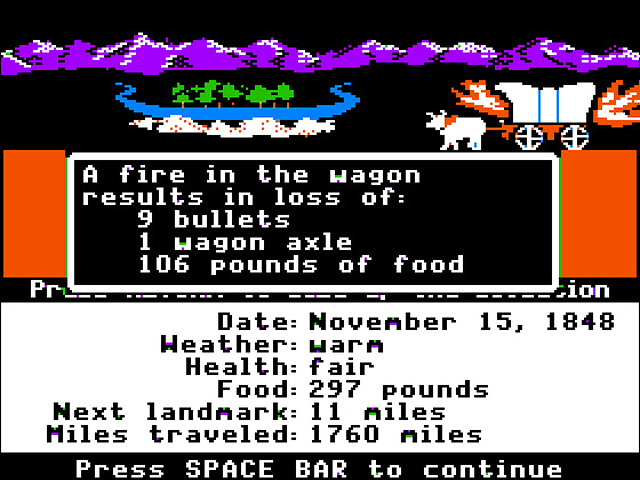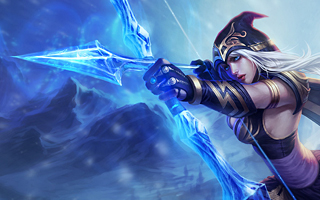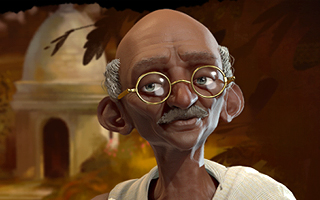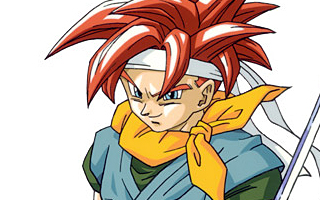Apple II
Top 10 Best Apple II Games of All Time!
The Apple II was one of the first successful mass-produced computers on the market. Designed to be small, convenient, and inexpensive, it was a major technological advancement over Apple’s first computer. The Apple II was aggressively marketed to educators by way of volume discounts, and it saw widespread use in American schools as a result. Meanwhile, a focus on business software made the computer popular with business owners and families as well. Its impact on the tech industry should not be underplayed, but this list is only concerned with its games. The Apple II line was home to many arcade ports, but its more fondly remembered for genres that had no footing in arcades or on home consoles. Graphical adventure games from companies like Sierra On-Line and Lucasfilm Games were especially noteworthy. The Apple II served as my personal introduction to video games, so I feel compelled to immortalize its best games with a list.
10
The Oregon Trail
1985

Perhaps more so than any other game on this list, The Oregon Trail is being recognized out of nostalgia. Like many others, I have fond memories of playing the game in the computer lab in elementary school. The game lets players assume the role of a wagon leader with the task of guiding their family from Missouri to Oregon in the 1840s. Players will have to deal with disease and food shortages along the way, and an element of randomness and unpredictability makes The Oregon Trail interesting. Everything can be going perfectly one moment, and the next thing you know your oxen gets stuck in the mud and your daughter has caught typhoid fever. Your family members can also meet their untimely ends due to measles, snakebites, cholera, exhaustion, drowning, and gunshot wounds. I never realized how big of a problem dysentery was for pioneers until I played the game. Resource management plays a big role in The Oregon Trail, and players will often have to make tough decisions. When you come to a river, for example, you can either fork over money for a ferry or risk losing supplies (and family members) by attempting to ford the river. You have the option of buying food, but it might make more sense to buy ammunition instead and hunt squirrels, rabbits, and buffalo. The Oregon Trail was created on a mainframe computer in 1971 as a way of teaching school children about the realities of 19th century pioneer life. The game was rebuilt in 1974 with funding from the state of Minnesota and released on the Apple II in 1978. This list is recognizing the 1985 remake, mostly due to the improved hunting mechanics. There are limits to the amount of meat your wagon can carry, but that doesn’t stop anyone from slaughtering everything they see.
9
Beyond Castle Wolfenstein
1984

Over a decade before Wolfenstein 3D helped usher in the era of first-person shooters, Castle Wolfenstein helped define stealth-based gameplay. Castle Wolfenstein is an action/adventure game set during the second World War. The game is played from an overhead view, and the objective is to traverse through a castle in search of secret war plans. Players can kill enemy soldiers, but it’s often more logical to sneak past them or even impersonate other guards. The game was notable for its unprecedented use of digitized voices and is considered a prototypical stealth-based game. Beyond Castle Wolfenstein followed the same basic formula of the original, but featured a host of improvements. You could attempt to bribe guards, the new dagger allowed you to kill guards in silence, and the dead bodies could be moved if you needed to hide the evidence. The sound effects were also improved and the vocabulary of the enemy soldiers had been expanded significantly. The objective of the game also seemed more significant. “Kill Hitler” carries more weight than the whole “steal secret plans” shtick from the first game.
8
Space Quest
1986

If you were a fan of computer games in the 1980s, you were likely familiar with Sierra On-Line. The company was responsible for many of the most significant graphic adventure games of all time. King’s Quest was particularly revolutionary, and it pioneered the use of animation in graphic adventure games which allowed players to freely control characters rather than relying exclusively on text commands. Puzzles were typically solved by using items from your inventory, and the game established the “take anything that isn’t nailed down” dictum that was used in subsequent Sierra adventure games. Space Quest followed the same gameplay conventions used by King’s Quest but traded the fantastical setting for a sci-fi theme. The game was centered around an incompetent janitor on a space ship who avoids being killed with the rest of the crew because he was taking a nap in the closet. The game doesn’t take itself too seriously, and the story unfolds like a comedy of errors. Space Quest II had better animation, more challenging puzzles, and an improved parser, but the first Space Quest was more fun.
7
Prince of Persia
1989

Characters in platformers often possess super-human jumping abilities, but Prince of Persia was known for its realistic proportions, physics, and animation. Thanks to a process called rotoscoping (which involves tracing over live footage frame-by-frame) Prince of Persia was much more fluid than typical games and represented a huge step forward for video game animation in general. The point of the game is to escape a dungeon within a one-hour time limit. In order to accomplish this, players will find switches to open doors, jump over pitfalls to avoid traps, and engage enemy soldiers in thrilling sword fights. Players even have to contend with their doppelganger. Price of Persia was instrumental in popularizing the “cinematic platformer” genre and took inspiration from sources like Arabian Nights, Raiders of the Lost Ark, and The Adventures of Robin Hood in order to create a memorable setting and a compelling story. The game was eventually ported to dozens of other computers and consoles, but the Apple II version of Prince of Persia deserves credit for being the first.
6
Archon: The Light and the Dark
1984

If you’ve ever felt that chess would be more exciting if the pieces actually had to battle each other, then Archon is the game for you. The game takes place on a 9×9 board and each side has 18 pieces at their command. Unlike chess, landing on another player’s piece results in an battle to determine who will take the square. These battles play out like arcade-style fights and players have direct control over their pieces during the combat sections. Each piece has their own abilities with respect to their movement, speed, lifespan, and weapon attributes. Certain weapons are more powerful than others, and certain pieces have unique abilities. The shape-shifter is probably the most unique character, and it can take the form of his opponent. While stronger pieces will usually be victorious, there’s an element of uncertainty in the game that you don’t see in chess. Battles can even end in double-kills with neither player claiming the square. There were a number of proper chess games released on the Apple II, but Archon is more fun than any of them since it allows you to do things that wouldn’t be possible on a real board game.
5
Lode Runner
1983

Lode Runner is an early platformer that challenges players to navigate through mazes and collect gold. In order to reach the gold, you’ll climb ladders, hang on ropes, dig holes, and set traps for endless waves of relentless enemy robots. Lode Runner‘s simple premise masks incredible depth, and it has often been described as a “thinking man’s” platformer. While most games of the era contained a handful of simple levels that looped indefinitely, Lode Runner contained a staggering 150 stages to play through. Naturally, these stages become increasingly challenging as you progress and most will require excellent problem-solving skills. Remarkably, Lode Runner also allows users to make their own stages with an intuitive custom level editor. The level editor adds tremendously to the replay value, and it really helped Lode Runner stand out in 1983. Although the game requires a lot of strategy, the action is fast-paced and more akin to what you’d expect from an arcade game. Fittingly, the game was ported to arcades (and countless other platforms) in the years that followed.
4
Elite
1985

In the early 1980s, games that were set in outer space typically involved avoiding asteroids or shooting waves of alien fighters. There was obviously various levels of complexity from one game to the next, but, by and large, the games featured two-dimensional graphics and one-dimensional gameplay. Enter: Elite. The idea of a wireframe game running at 6 frames-per-second probably sounds laughable today, but the significance of the game is nothing to scoff at. Imagine a fully 3D universe that allows you to travel to over 1000 planets. Imagine a game that allows for intricate space battles with pirates. Imagine a game where you can actually upgrade your weapons, shields, energy banks, cargo capacity, and docking mechanisms. Imagine a game where you trade commodities with aliens rather than mindlessly blasting away at them. Imagine a game that gives you the freedom to engage in mining, bounty hunting, military missions, or piracy. Now imagine this game in 1985. Elite was groundbreaking in every sense of the word.
3
Pirates!
1987

Pirates! is an ambitious strategy game from the mind of Sid Meier that let’s players live the life of a pirate, a privateer, or a pirate hunter. Set in the Caribbean in the 16th, 17th and 18th centuries, there are few limits to what you can accomplish. Whether you’re hunting for buried treasure, trying to locate your lost family members, or simply trying to build up your reputation to win the hand of the Governor’s daughter, players are given tremendous freedom in the game. As captain, it’s your responsibility to keep your crew happy. Failing to do so can lead to a mutiny and you may find yourself marooned on a desert island. Pirates! is a complex, diverse, and open-ended game that was something of a breakthrough for the strategy genre. Sid Meier would go on to reach even greater fame with the Civilization series, but Pirates! will always have a special place in history. What’s not to love about a game where you get to attack towns, commandeer ships, meet beautiful women, and steal everything that’s not nailed down?
2
Pinball Construction Set
1983

Pinball video games felt like a natural progression of the simple Pong variants that dominated the video game market in the 1970s. After all, they both revolved around the concept of bouncing a ball off of various surfaces. Still, most pinball video games were middling at best and seldom felt like real pinball. A company called BudgeCo attempted to address this with the release of Raster Blaster in 1981. BudgeCo realized that realistic physics were paramount if you wanted to properly capture the feel of a real pinball table. The Apple II was not designed with fast-moving graphics, collision detection, or proper sprites in mind, but Raster Blaster ran with incredible speed. Pinball Construction Set took the concept to the next level by giving players the ability to construct their own virtual pinball machines by selecting from various bumpers, flippers, spinners, and other pinball parts. The core gameplay was based on the foundation created by Raster Blaster, but players were free to modify the gravity and physics model as they saw fit. Players could even create their own custom artwork to go with their custom tables. One of the greatest aspects about the game was the ability for users to save their creations onto floppy disks and freely trade them. Owning Pinball Construction Set wasn’t even a pre-requisite to playing someone’s custom tables! Anyone who enjoys games like Minecraft or Super Mario Maker should understand the importance of Pinball Construction Set. The game helped establish the “builder” genre and was described by Steve Wozniak as “the greatest program ever written for an 8-bit machine.”
1
Maniac Mansion
1987

The first of many graphic adventure games from Lucasfilm Games, Maniac Manion introduced the “SCUMM” engine which allowed players to interact with their environments by selecting various verbs from a menu. This was in sharp contrast to other adventure games of the day that typically relied entirely on text commands. The user-friendly interface was noteworthy, but the game is probably best remembered for its memorable settings and absurd sense of humor. The premise of the game involves a group of friends navigating through a creepy mansion in an attempt to rescue a cheerleader from a mad scientist. Players assemble a team of three characters (each with their own skillsets and inventories) and the game allows them to switch between them on the fly. Some situations require that the characters work together to solve puzzles. In one instance, a character needs to ring the doorbell to create a distraction while another character sneaks into a room. The scenarios in the game are completely ridiculous, so you’ll become acquainted with disembodied tentacles, stumble upon nuclear reactors, and even find yourself in a situation where microwaving a hamster is an option. Maniac Mansion has multiple endings depending on the characters you select and the actions you take, so its replay value is a lot higher than most other adventure games. The innovative interface, unforgettable characters, and irreverent sense of humor have made Maniac Mansion a timeless classic.





Do you agree with this list? Let us know what you think by leaving a comment below. Your opinion matters!